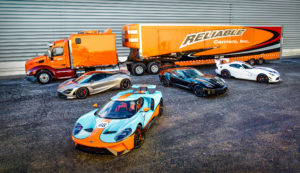Ever wondered “How does a solar generator work?” In this article, we’ll answer that question in a simple, easy-to-understand way.
We’ll break down the mechanics of solar generators, shedding light on how they turn sunshine into power. This insight not only satisfies your curiosity but also helps you make informed decisions about solar energy.
So, ready to uncover the secrets of solar-powered generators? Let’s dive in!
The Parts of a Solar Generator
A solar generator comprises multiple elements that collaborate to capture solar energy and transform it into practical electrical power. Here are the key parts of a typical solar generator:
Solar Panels (Photovoltaic Cells)
Solar panels, also known as photovoltaic cells, are the primary component of a solar generator. They are designed to capture sunlight and convert it into electricity. This process is made possible due to the unique properties of the materials used to manufacture these panels, such as silicon.
These photovoltaic cells are grouped together to form a solar panel. Each panel can generate a certain amount of electricity, and multiple panels can be used to produce more power as needed.
Battery Bank
The Battery Bank in a solar generator is like a big storage box. It takes the electricity from the Solar Panels and keeps it safe and ready for use. Just like a squirrel hides nuts for winter, the Battery Bank stores power for times when there’s no sun.
The Battery Bank has one more job. When you need to use the stored power, the Battery Bank sends it out to your devices or machines. In this way, the solar generator could power your TV, computer, or even your entire house!
Inverter
The Inverter in a solar generator is like a translator. When your solar generator makes power, it’s not in a form that your devices or machines can use right away. The Inverter’s job is to change this power into a form that’s usable, just like someone translating from one language to another.
In addition to transforming power, the Inverter also plays a key role in safety. It ensures the electricity produced by your solar generator is as safe to use as the power you’d get from a regular electrical outlet. That’s why the Inverter is an essential part of your solar generator.
DC Loads (Optional)
DC Loads are an optional part of a solar generator, but they can be very useful. These are devices or machines that can use the power directly from the Solar Panels or Battery Bank. They don’t need the Inverter to change the power into a usable form, so they can be more efficient.
If you have DC Loads in your solar generator system, you can save energy and make your system last longer. But remember, not all devices or machines can be DC Loads. Always check if a device can handle DC power before connecting it to your solar generator.
AC Outlets
AC Outlets in a solar generator are just like the power sockets you find on your walls at home. They let you plug in your devices and appliances, making the stored solar power accessible for use. These outlets are a critical component that allows your solar generator to integrate seamlessly with your daily power needs.
By converting the stored DC power back into AC power, they make solar energy practical and useful in every household. Thus, the solar generator becomes a versatile power source for all your needs.
Monitoring System (Charge Controller Display)
The Monitoring System, or Charge Controller Display, acts as the eyes and ears of your solar generator. This part allows you to keep track of how much power your solar generator produces and uses, just like watching the gas gauge in your car. It’s a crucial tool for understanding and managing your solar power system effectively.
In addition to providing real-time data, the Monitoring System also alerts you to any potential issues with your solar generator. It’s like a doctor who checks the health of your system, alerting you if something is wrong. Thus, the Monitoring System ensures your solar generator remains in top condition, ready to provide clean, renewable power whenever you need it.
Frame and Enclosure
The Frame and Enclosure of a solar generator can be seen as the protective armor. They provide strength and durability to the entire setup, housing all the components securely. They are often made from sturdy materials to withstand different weather conditions, ensuring the longevity of your solar generator.
In addition to protection, the Frame and Enclosure also play a role in the mobility of some solar generators. Especially in portable solar generators, the Frame and Enclosure are designed to be lightweight and compact. This allows for easy transport and setup, making solar power accessible wherever you go.
How Does a Solar Generator Work?
The operation of a solar generator involves several steps, from capturing sunlight to providing electrical power to devices. Here’s a step-by-step explanation of how a solar generator works:
Sunlight Capture
The first step in the process of generating solar power is capturing sunlight. Solar Panels, or Photovoltaic Cells, are designed to perform this task. They absorb the sunlight and start the process of transforming it into electricity.
This conversion happens due to the special materials in the solar panels. When sunlight hits these materials, they begin to move around, creating an electrical flow that we know as solar power.
Charge Controller Regulation
The Charge Controller, or Regulator, steps in once the Solar Panels have created the electrical flow. This component ensures that the flow of electricity is stable and safe to be stored in the Battery Bank. It acts like a traffic policeman, directing the solar power and preventing it from overloading the battery.
In addition to maintaining the health of the battery by preventing overcharging and excessive discharging, the Regulator plays a crucial role in the overall efficiency of the solar generator. Without it, the system would risk damaging its battery, shortening its lifespan, and reducing its ability to store power effectively.
Inverter Conversion
The Inverter is the key player when it’s finally time to use the stored solar energy. The Inverter receives the DC power stored in the Battery Bank and converts it into AC power, the standard form of electricity that most of our household appliances use.
Without the Inverter’s conversion, the DC power would remain unusable for most common devices. The Inverter also ensures that the solar power is safe to use, matching the safety standards of power from a standard electrical outlet.
AC Power Distribution
Once the Inverter has transformed the DC power into an AC format, the AC Outlets distribute this power to your devices and appliances. These outlets, found on the solar generator, are your access points for using the stored solar energy. Whether you need to charge your phone, run your refrigerator, or power your entire house, the AC Outlets make the conversion from sunlight to usable power complete.
This distribution system is designed to be as user-friendly as possible, mirroring the familiar power outlets found in your home. As a result, using a solar generator can be as straightforward and convenient as plugging into a traditional wall socket.
Monitoring and Control
The Monitoring System, or Charge Controller Display, is the command center of your solar generator. It gives you a clear picture of the power production and usage within your system.
The Monitoring System not only keeps you informed but also alerts you to any potential problems. In this way, you can proactively manage your solar generator, ensuring it continues to provide reliable, renewable power.
Usage and Recharging
Usage and recharging are the final steps in the process of a solar generator. During the day, your solar panels capture sunlight and convert it to electricity, which is stored in the battery bank for future use. When you plug your devices or appliances into the AC outlets, they draw upon this stored energy, using it just like the power from a traditional electrical outlet.
Over time, as power is used, the level of stored energy in the battery bank decreases. However, whenever the sun is shining, your solar panels will be hard at work, recharging the battery bank so it’s ready to power your needs even when the sun isn’t out. For more information on harnessing solar power for your home, you can visit blueravensolar.com to explore sustainable energy solutions.
Safety Features
Safety is a key concern when dealing with electrical systems, and solar generators are no exception. Incorporating several safety features, these devices are designed to prevent accidents and ensure the safe operation of your solar power system. This includes elements like fuses or breakers, which protect your system from electrical faults, and grounding systems, which prevent electrical shock hazards.
The safety features of a solar generator also extend to the use of robust materials in the construction of the frame and enclosure, ensuring they can withstand harsh weather conditions.
Harnessing the Power of the Sun
In understanding “how does a solar generator work,” it’s clear that it’s a marvel of modern technology. These generators harness the sun’s energy, providing us with a practical and renewable power source. They take something as abundant as sunlight and transform it into the power we use every day, making our lives greener and more sustainable.
It’s quite amazing when you think about it, isn’t it? The power of the sun, right in our homes.
If you gained new insights from this article, be sure to explore our blog for more enlightening content.





Be First to Comment